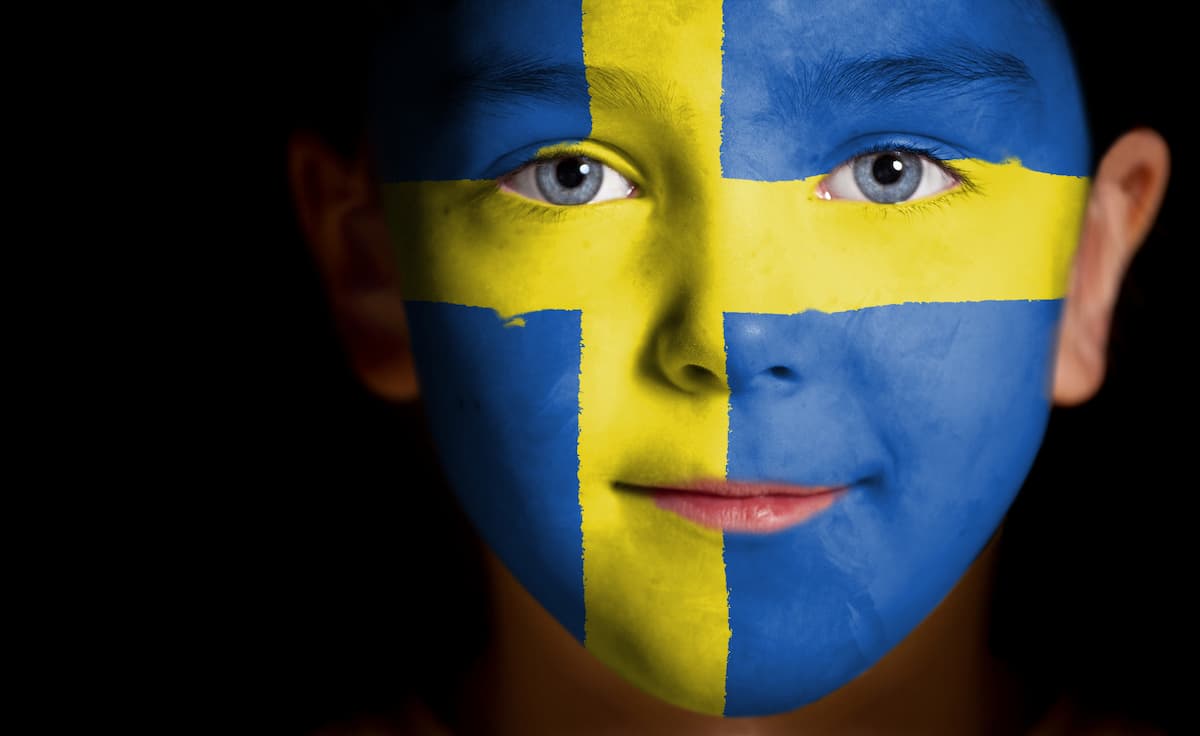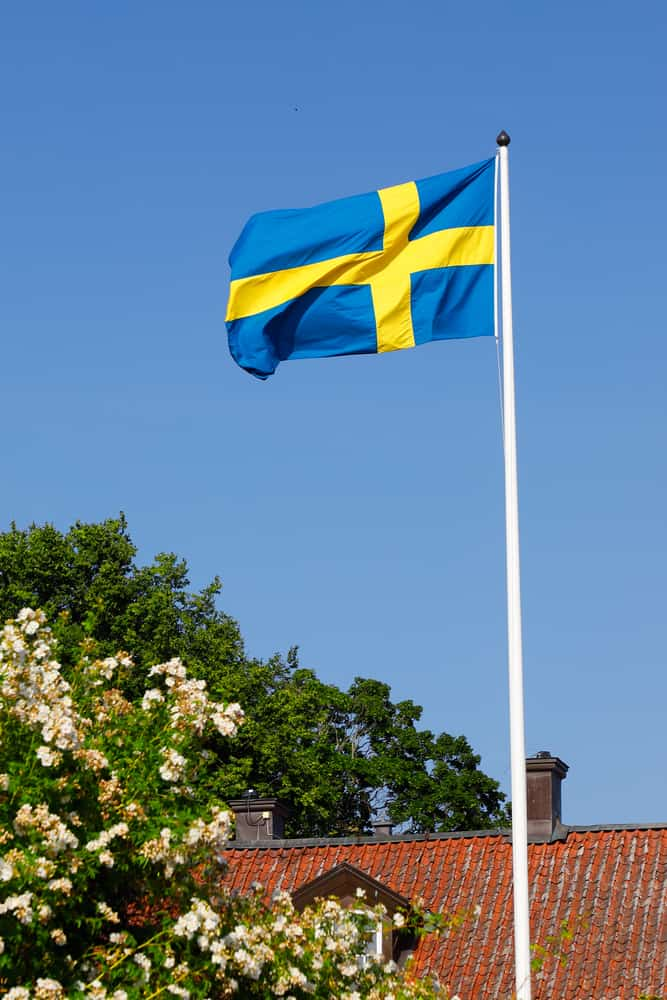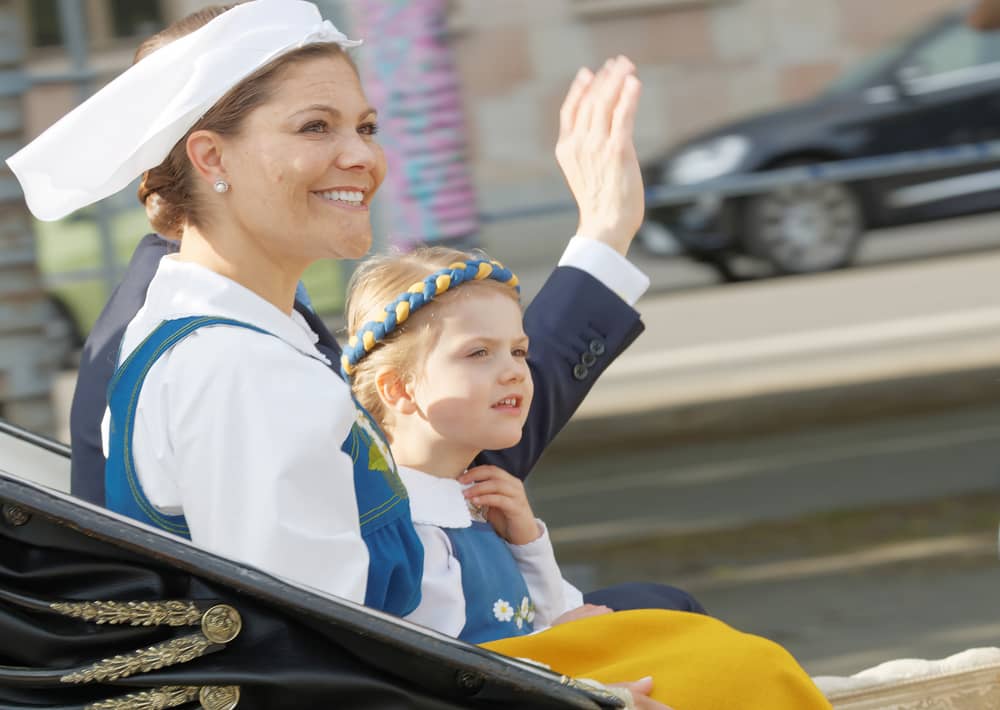Whether you’ve just come back from a soccer match, where a sea of Swedes in blue and yellow awaited the opposing team, or you’re planning a trip to Sweden and want to make sure you fit in, knowing just what’s behind Sweden’s colors is definitely not a bad idea.
After all, there are very few countries in the world that include blue and yellow on their flags. This means that the Swedish flag colors definitely stand out, but where do they come from?
As you’ll see, the history of the Swedish blue color or the golden yellow isn’t entirely established. There are certainly some good stories though!

Why are Sweden’s colors blue and yellow?
Sweden’s colors are blue and yellow based on the coat of arms of Sweden of 1442, which consists of two yellow lions holding several blue and yellow shields. However, Sweden’s colors have been blue and yellow since at least the royal coat of arms used in 1275 by Magnus III.
Of course, there are some who say that Sweden’s colors came from a sign from god. Specifically, King Eric, the 9th, who reigned in the 12th century, supposedly saw a golden cross in the sky above him during the first Swedish crusade as he arrived in Finland. Based on this, he created his banner as a golden cross on a blue background.
Funnily enough, this is very similar to the story of how the Danish flag was created, which remains the oldest flag in the world today. Whether or not God was just very busy and Scandinavia at the time remains to be seen.

At the very least, there are various banners throughout Swedish history that featured blue and yellow in some format, especially yellow lions on blue backgrounds.
The first definitive evidence of a blue flag with a yellow cross representing Sweden dates from the early 16th century. However, the current Swedish flag with the blue and yellow of Sweden’s colors only came into effect in 1906, following the dissolution of the union between Sweden and Norway the previous year.
You may also be interested in: 34 Beautiful Swedish Words and Sayings (You Need to Learn)
Even if that has only been the official flag for just over 100 years, the commitment of the people of Sweden to the blue and yellow colors is very well established. For example, female Swedish traditional clothing worn on National Day has, in recent years, become much more likely to be blue and yellow.

It was actually the current Queen Sylvia who made this popular and now, on national day each year, it’s very common to see the female members of the Swedish royal family in Sweden’s colors of blue and yellow.
You also have to simply watch any sports event with Sweden competing in it to make it pretty obvious what Sweden’s colors are. With a sea of blue and yellow throughout the supporters, it seems evident that no matter where the history of these colors came from, they’re here to stay.
Take a look at: 31 Best Reasons to Move to Sweden
What color blue is the Swedish flag?
The official Swedish blue color code is, based on the Pantone colors, Pantone 301. The yellow on the Swedish flag in Pantone colors is Pantone 109U/ 116C. There are also corresponding digital color codes for online use of the Swedish colors.
Specifically, these are, for yellow:
- R:255 G:206 B:0
- C:1 M:18 Y:100 K:0
For the blue color of the Swedish flag, the digital color codes are:
- R:0 G:85 B:155
- C:100 M:68 Y:21 K:5
In addition, if needed, the dimensions of the Swedish flag are as follows:
- The proportional measurements for the length are: 5, 2, 9
- The proportional measurements for the height are: 4, 2, 4
